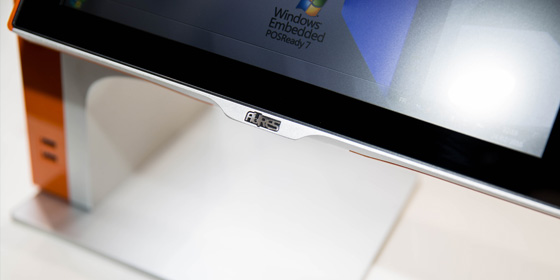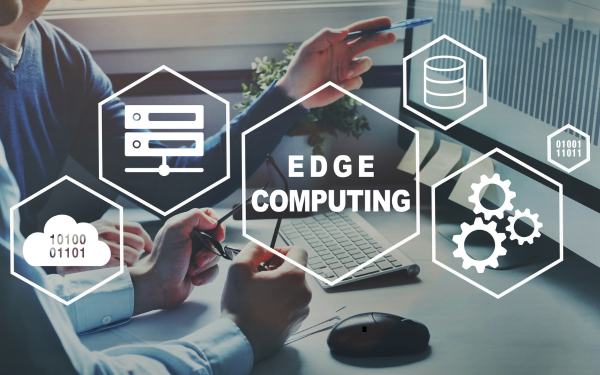Ask anyone which technology is having the biggest transformative effect on retail right now, you’d get short odds on them saying Artificial Intelligence (AI). But AI doesn’t exist in a vacuum. What often gets overlooked is that, for AI to weave its magic, you need a whole stack of other technologies to build it on. It’s worth acknowledging the importance of these, too.
Among the most important are the technologies that facilitate the incredible feats of data processing that underpin AI’s capabilities. For AI to do AI things you need A LOT of compute power. You’ve probably heard about how AI is driving massive expansion of data centers around the world to meet this demand for compute juice. But that only solves half the problem. As well as how much processing capacity is available, where that processing happens is critically important, too.
Sending the huge volumes of data used by AI applications back and forth between endpoints and distant data centers causes log jams in transmission systems. Latency becomes a major issue.
No one in retail wants to invest big in AI only to find that the personalization tool on their kiosk takes 30 seconds to make a recommendation, or their computer vision scanners at checkout are actually slower than passing every item through a barcode reader. A big part of AI’s appeal is driving efficiency to previously unknown heights. But for that, you need speed.
That’s why edge computing is establishing itself as one of the most talked-about technologies in retail. It’s not as glamorous as AI, sure. But by adding local processing capabilities ‘out at the network edge’ where AI tools are operating, edge computing infrastructure mitigates latency risks and allows applications to work at enhanced speeds.
In retail, the speed, agility and control that edge infrastructure adds to AI applications is helping to unlock the potential of the most advanced AI technologies in store. Here are four examples of how it is being used.
Smart shelves
Walmart’s adoption of the EdgeSense digital shelving system across all 4,600 of its US stores was a landmark moment in store digitization. Comprising vast arrays of on-shelf IoT sensors, mini screens and an AI control system, EdgeSense manages stock checks, pricing updates, replenishment workflows, planogram compliance and more in close to real time, automating tasks that previously took hours of manual labor. Edge processing is central to its ability to coordinate thousands of shelf devices per store with maximum efficiency.
Checkout-free technology
Perhaps the most storied example of edge computing being used in retail to date is Amazon’s much-talked-about ‘just walk out’ technology, as pioneered in its Amazon Go stores. Amazon’s bold attempt to do away with the concept of checkout altogether involves a complex array of shelf sensors, cameras and RFID tags and scanners which, under the management of an AI control system, register every person who enters the store via an app on their phone, identifies what they take from the shelf, and bills their account (via the same app) accordingly. As with Walmart’s smart shelves, with so much sensor and camera data flying around, edge computing plays a crucial role in processing it all in a controlled, efficient manner.
Responsive signage
The idea of showing personalized ads to shoppers as they browse has been touted as a key example of ‘personalizing the experience’ for a very long time. Sadly for physical retailers, doing it in-store is much more logistically challenging than it is online. To be effective, systems have to be capable of identifying a useful cue about the customer – demographic information, dwell time at a particular shelf, accurate identification of an item picked up – and use that to trigger (or even create on the spot) a relevant ad in milliseconds. Walgreen’s ill-fated attempt to replace refrigerator doors with responsive ‘smart cooler’ screens showing personalized ads was ultimately judged an expensive fiasco. But the failure was down to a tech stack that wasn’t up to the size of the task, including insufficient edge capabilities. Going forward, ‘edge personalization’ is likely to be a trend worth watching in retail media.
Computer vision
Computer vision is the use of AI to gather and extract data from video feeds. Given the particularly heavy data loads involved in video streaming (especially always-on feeds used for AI analysis and monitoring), latency has always been a particular problem for computer vision applications. We’re now starting to see edge processing solutions provide scalable alternatives in retail. For example, 7-Eleven Japan is rolling out Sony’s AITRIOS edge platform to around 500 stores, using on-camera processing to analyze customer behavior and engagement patterns around a store in order to inform merchandising decisions.
In summary, edge computing provides an essential foundation for the rapid evolution of high-tech, AI-enabled physical retail. By processing data locally in each store, and often on each device, retailers unlock real-time automated responsiveness that was previously unattainable. The result is shelves that issue replenishment alerts the moment stock falls below the threshold, checkout systems that see and respond to activity as it happens, and, just maybe, promotion, merchandising and pricing systems that will soon be able to tailor themselves on the fly to each customer.




